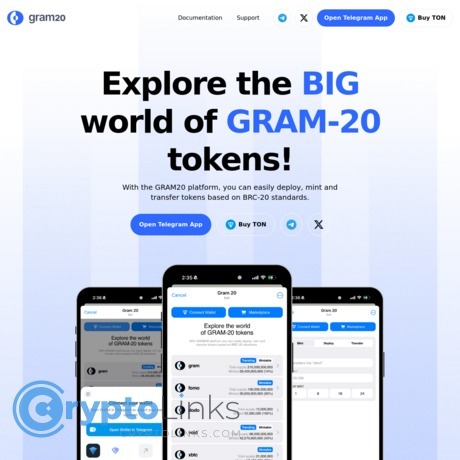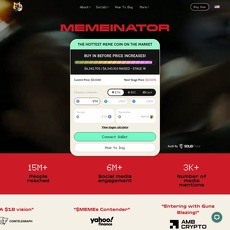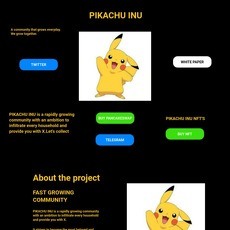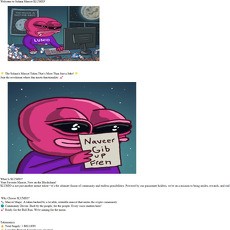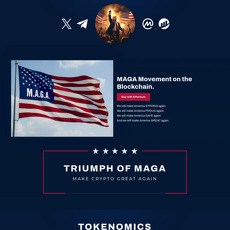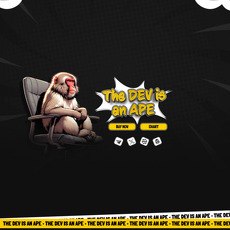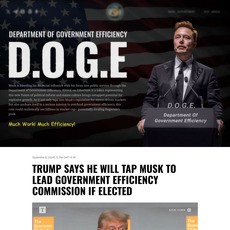TG20 TGram Review
TG20 TGram
gram20.com
If your website is on the scam list and you think that you are not a scammer, contact us. After you provide us with all the proof that you are in Crypto World with good intentions, we will delist you. Usually, you get in this category because you are hiding your team, you have a bad reputation(you are tricking, deceiving, scamming people), and you haven't got a written project whitepaper or is a shitty one....
Their Official site text:
Introduction
Introducing GRAM-20, the cutting-edge platform designed to maximize the potential of inscriptions on the TON blockchain. This pioneering technology boasts an advanced infrastructure that unlocks the full capabilities of blockchain technology. Experience the power of sharding, the flexibility of customizable smart contracts, and a myriad of other groundbreaking features that redefine the blockchain landscape.
What are Inscriptions?
Inscriptions in the context of blockchain technology involve embedding various types of data, such as text, images, or other digital content, directly into blockchain transactions. These inscriptions are permanently recorded and are immutable, meaning they cannot be altered or deleted. This practice enables the permanent and verifiable storage of information, ranging from simple messages to complex data structures, within the decentralized and secure framework of a blockchain.
Inscriptions are shutting down networks
There are dozens of capable Layer 1s around. However most of them have been recently affected by various BRC-20-like projects, launching their versions of inscriptions protocol.
These new inscription protocols being launched on various Layer 1 blockchains are causing quite a stir, mainly because they're leading to network shutdowns. The big issue is that they create a lot of congestion. Most of these networks just aren't built to handle that kind of load.
Since most Layer 1 networks were designed with simpler tasks in mind, they're not equipped to deal with this new, more demanding technology. It's like asking a basic family car to do the work of a heavy-duty truck. This is why the TON network and the GRAM-20 standard are better suited for inscriptions than other networks.
TON Smart Contracts
Everything is a Smart Contract
In the TON blockchain, each account is designed as a smart contract. Consequently, wallets, widely used by all participants, also function as smart contracts. They have the capability to receive external messages and facilitate communication with other contracts within the network.
This structure offers extensive opportunities for both users and developers, such as the ability to customize and enhance wallets, thereby adding a layer of personalization and functionality not typically found in traditional blockchain systems.
External Messages
Smart contracts in the TON blockchain are designed for internal work and, by their very nature, do not have the ability to request information from the outside world. To bridge this gap, TON uses external messages. Some contracts, such as wallets, support receiving these messages. This feature allows users to send specific instructions to their wallets via external messages, allowing them to perform desired actions on the blockchain.
Internal Messages
In the TON blockchain system, the messages exchanged between smart contracts are termed as internal messages. These internal messages are utilized by various contracts within the network, including wallets, for interacting with other contracts, especially upon the receipt of external messages.
This mechanism forms a crucial part of the blockchain's functionality, enabling a seamless interplay between different contracts within the system, thereby facilitating complex operations and transactions.
Getters
Special functions within the TON blockchain enable data retrieval from a smart contract. This operation does not require gas payment, as it is executed on the client's side. This feature significantly enhances user interaction with smart contracts, efficiently acquiring necessary data without incurring additional costs, thus streamlining the process for users and developers alike.
Onchain architecture
Why are there so many contracts?
TON is a blockchain designed to handle immense workloads, achieved through sharding. In this system, everything is sharded, including smart contracts. This means that it's not feasible to direct all queries to a single contract or store everything in one contract, primarily because TON contracts incur a storage fee.
This fee structure is implemented to discourage excessively large contract storage, as it would slow down transaction processing. Therefore, it's essential to create an architecture where each contract is responsible for a specific operation.
How does this help us?
As observed in the diagram above, each user has their individual user contract for each token. Consequently, each contract is responsible for only one token and one user. This distribution of responsibility results in greater flexibility and faster processing. It also facilitates the integration of various logics into the contracts.
For example, they can restrict frequent minting to avoid overloading the network and apply different penalties for such actions.

